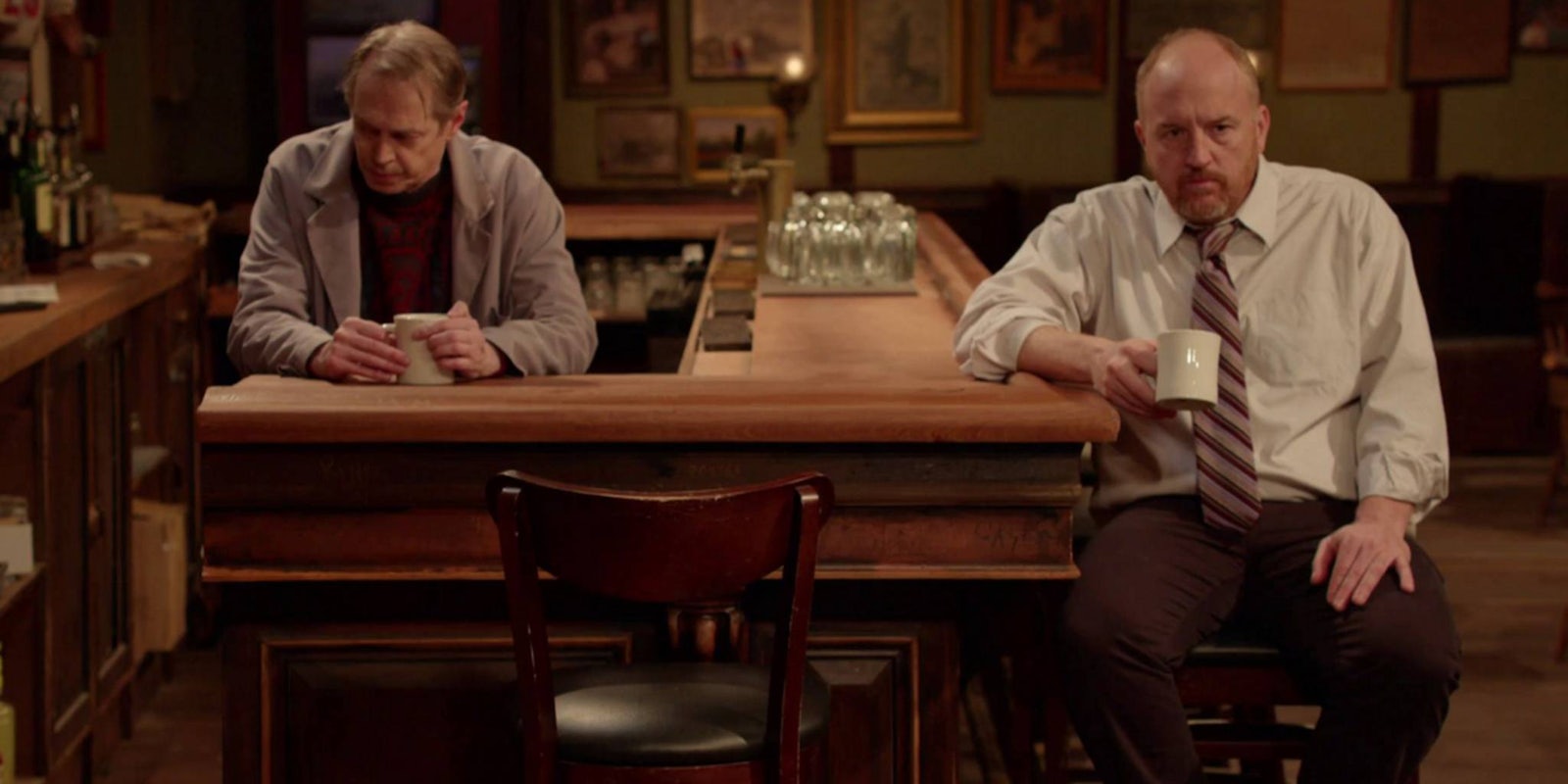When Louis C.K. announced his new webseries Horace and Pete back in January, it wasn’t through a public relations company. He simply sent out a low-key email to subscribers on a Saturday. If you wanted to watch, he was asking a measly $5. For later episodes, the price was lowered to $3. It was a quiet experiment that elbowed out the middle man.
Ten episodes later, C.K. says funding and producing the webseries on his own landed him millions of dollars in debt. C.K told Howard Stern on Monday that producing just one episode cost $500,000, and that he hasn’t made money back (though he could recoup that money by going on the road, which is a big part of what he does for a living). He also hasn’t gone to backers, and didn’t do much in the way of promotion, both part of C.K.’s strategy.
In an email to fans in February, he related that “as a TV watcher I’m always delighted when I can see a thing without knowing anything about it because of the promotion. So making this show and just posting it out of the blue gave me the rare opportunity to give you that experience of discovery.”
Indeed, that was part of the show’s charm. The series itself is melancholy and obtuse, and part of the draw for fans was figuring Horace and Pete out—and figuring out that it wasn’t Louie. In an era of five-minutes-or-less webseries, C.K.’s episodes stretched out over 40 minutes to an hour, and waning attention spans just aren’t going to latch on to that sprawl, or, apparently, shell out $31 for 10 episodes.
The New York Times‘ Jason Zinoman suggests that C.K.’s debt highlights just how far creative freedom can go, even for a big name like C.K. Would Horace and Pete have done better on FX, home to Louie and Baskets? Netflix? Did it need a “soulless network suit” to be successful?
Horace and Pete is an interesting parallel to lower budget webseries, and what it takes to keep fans engaged. The creators of The New Adventures of Peter and Wendy found critical success with their crowdfunded season 1, but for season 3, they had a hard time keeping up momentum, and had to go back to begging for funds. Last fall, PJ Liguori, the creator of Oscar’s Hotel, had to address fans who didn’t want to pay $10 for a download after supporting his work on YouTube. “If I was to make it free, everything you want from Oscar’s Hotel wouldn’t exist,” he said.
Horace and Pete didn’t grow its fanbase on YouTube or Vimeo, where many webseries do. C.K. went in reverse for this experiment, but fans didn’t buy in, and there wasn’t much buzz past the first few episodes. Horace and Pete was already a challenging watch, and its “Hey, here’s this thing”-style promotion didn’t help build interest. This stands in contrast to Kanye West‘s promotion for The Life of Pablo, which mainly happened on Twitter, in real time. He kept up momentum, however frenzied, and the album is now heading to No. 1 on the Billboard 200 chart without ever having a physical release.
Was the experiment worth it?
“Worth,” in this case, is relative. C.K. could be testing the waters to see if the show would fly on TV, and losing money on a show isn’t uncommon. But the series hinged on what fans thought the show was worth, and what the lack of revenue revealed is that when it comes to TV in 2016, we want to be a bigger part of it. It’s a social act, and the social aspect of Horace and Pete was lacking.
Eventually, C.K. told Stern, he’ll sell the series to a studio or streaming platform, but he was excited that this is “a new avenue for making this stuff.” When online viewing is in flux and streaming giants like Netflix are rebooting nostalgia to keep people interested, that’s worth something.


